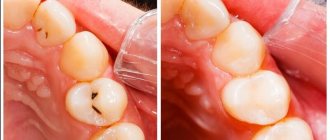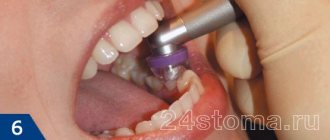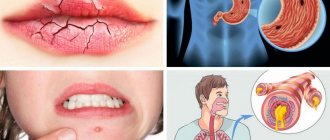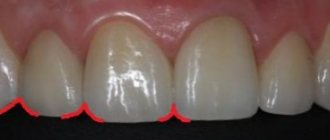In recent years, Germany has seen a significant decline in the prevalence of dental caries. Despite this, the disease remains a serious problem. The causes of caries have been studied in great detail, and dentistry has long used appropriate tools to cure and prevent this disease. Optimal oral hygiene and control of dietary habits, together with the prevention of caries, can provide almost 100% relief from the disease. Dr. Wolfgang Strübich / Bern
When sugar consumption is high, irregular or complete absence of dental visits plays a decisive role in the development of dental caries. In addition, the polarization of the disease has shown that social factors also have a significant influence on the occurrence of caries.
Over the years, the ineffectiveness of recommendations and restrictions has been confirmed by various preventive measures and strategies. It is obvious that the calls of dentists (“Reduce the amount of sugar in your diet”, “Consume sugar only with meals”, “Be sure to brush your teeth after eating”) are ignored with depressing consistency. Therefore, successful preventive measures should not focus on the old “fight against tooth decay” or “war on excessive sugar consumption” scheme. On the one hand, patients want to take these preventive measures independently and hold prevention under personal responsibility, but on the other hand, they resort to prevention only when it does not interfere with their established habits.
The success of the use of fluoride in the prevention of caries is absolutely unique in the history of medical practice . It confirms that the most remarkable achievements can only be achieved when preventive measures require no (or minimal) changes in established daily rituals. The use of fluorides occurs without additional effort and expense, and therefore is widely accepted among the population. Today, almost every toothpaste contains fluoride, and it is not so easy to find a product without them in the pharmacy.
Over the past thirty years, various scientific studies have also looked at the possibility of replacing sucrose in sugar-containing products with other sweetener options. The main thesis is that these substances are not broken down by oral bacteria and most likely do not contribute to the formation of plaque due to acid exposure. Dentistry has separately begun to study the substance xylitol (Xylitol in English-speaking practice) and the effect of its influence. Among all the sweeteners studied, xylitol was found to be the most suitable alternative. The recommendations for the use of xylitol outlined in this article are not an exhaustive review - first of all, this article is intended to reveal a modern approach to the positive effects of consuming xylitol-containing gum on oral health. Thus, this publication can provide reference materials for dentists involved in caries prevention.
Xylitol - chemistry, manifestation, metabolism
Xylitol is a pentahydric sugar alcohol. Xylitol is an intermediate product of glucose metabolism and, therefore, is subject to natural production in both human and animal bodies. This substance is found in all tissues of the human body; Moreover, it reaches the highest concentration in the liver.
Many fruits, berries and vegetables are rich in xylitol. Today it is mainly produced from the polysaccharide xylan, which is found, for example, in birch wood. Industrial production of xylitol is expensive, so its use as a sweetener is relatively expensive.
When consumed exogenously, xylitol is absorbed in the intestinal tract through the process of free diffusion. Up to 80% of xylitol metabolism occurs in the liver. Xylitol is also absorbed approximately 5 times slower than glucose.
Due to its osmotic effect, significantly exceeding the daily dose of the sugar alcohol xylitol can lead to increased intestinal motility or cause diarrhea. However, thanks to adaptive mechanisms, the rate of absorption increases in just a few days. A single dose of 10 g of xylitol does not cause a negative effect in children, and adults can consume 50 to 70 g of xylitol per day without complications . After habituation and adaptation, the daily dose can be raised to 200 g.
The refreshing taste of xylitol is due to its high endothermic temperature of dissolution. Thus, when solid xylitol dissolves in the mouth, a cooling effect occurs.
Is the component harmful and is it allowed during pregnancy?
The xylitol contained in toothpaste is not harmful to the human body if the instructions in the instructions are followed. The negative impact of this substance is possible only if there is an individual intolerance to the component and/or if the permissible standards of use are exceeded. In addition, xylitol has a weak laxative effect (at high concentrations when taken orally).
A pregnant woman must follow all oral hygiene recommendations given by the dentist. The expectant mother needs to brush her teeth twice a day with a brush of weak or normal hardness. You can use both an electric toothbrush and a regular one.
If necessary, the doctor will prescribe medicated pastes containing xylitol, intended for cleaning teeth in an interesting position. Pregnancy is not a contraindication for the use of such products. However, the expectant mother needs to regularly visit the dentist (2-3 times during the entire period of gestation) for a preventive examination and professional cleaning.
It is strictly not recommended to use products containing xylitol if:
- hypersensitivity to the compound in question;
- epilepsy;
- in children up to three years of age.
The content of xylitol, like any other substance included in toothpaste, can be found from the information on the packaging and/or tube.
Definitions
In addition to sugar, the sweet taste of food is influenced by two other groups of substances: sweeteners and sweeteners. The term “sugar” refers to all mono- and disaccharides contained in food products, but it is table sugar, that is, sucrose, that has the greatest influence on the processes of caries occurrence. Sweeteners such as saccharin, aspartame, acesulfame or cyclamate taste much sweeter. They are mainly added to drinks. Sweeteners are also often confused with sugar substitutes; the latter include, for example, the sugar alcohols sorbitol, mannitol and xylitol. The sugar alcohol xylitol is roughly comparable in sweetness to sucrose, while the taste of sorbitol and mannitol is half as strong. Sugar alcohols are mainly used in the manufacture of various sweets, tablets and chewing gum. While sweeteners are extremely calorie-dense, sweeteners are calorie-free; their calorie content is half that of sucrose. It should be noted that both sweeteners and sugar substitutes have little or only minimal effect on insulin and blood sugar levels, making these substances safe for diabetics.
Where is xylitol used?
It tastes like regular sugar and does not have the unpleasant aftertaste that other artificial substitutes have. Xylitol, as a low-calorie substance with a low glycemic index (GI), was used in European countries back in the 19th century as a treatment for patients with diabetes.
In the modern world, manufacturers in many countries add xylitol to food and medicines. Sweets, chewing gum, candies, syrups, toothpastes, lollipops and chewable multivitamins are not complete without the addition of birch sugar.
Xylitol is a real salvation for those dieters who find it difficult to completely give up sweets. It is quite capable of replacing the usual sugar. Xylitol has a low calorie content and can be added to cold and hot drinks and snacks.
Filimonov Oleg Vladimirovich
Implant surgeon, orthopedist
I rather lean not towards substitutes, but towards sugar “cancellers”. We eat too many carbohydrates, so it makes sense to cut them down. But part of the remainder can be replaced.
Oral microflora: microbial digestion
The effectiveness of sweeteners in the prevention of caries can be examined using the example of the behavior of microorganisms in the human oral cavity. Consider the microbial decomposition of sucrose: it leads to the production of significant amounts of lactic, formic, acetic and propionic acids. Sorbitol and mannitol reduce the breakdown of substances by oral bacteria and reduce the production of lactic acid, while xylitol is not broken down at all or to a minimal extent by the bacterial microflora of saliva and dental plaque.
Obviously, xylitol is simply not food for oral microorganisms, and when xylitol is microbially degraded, it does not provoke the production of lactic acid. Moreover: regular consumption of xylitol not only prevents further acid production, but also contributes to the formation of a population of streptococci with significantly reduced cariogenic activity. Thus, xylitol significantly reduces the production of lactic acid after ingestion of glucose in dental plaque in children with high cariogenic activity. In this study, patients were given 5 g of xylitol daily in the form of chewing gum. After 14 days of consumption of xylitol-containing chewing gum (daily dose of 10.9 g of xylitol), a sharp increase in biofilm pH was positively observed, while the pH of patients consuming sorbitol-containing gum at a similar amount showed a sharp drop in pH. Therefore, the cariogenicity of a confectionery product can be determined by its acidity level through telemetric pH measurement on a living object. Confectionery products that lower the pH level to at least 5.7 within 30 minutes are entitled to the “Teeth-friendly” label in Germany. This labeling helps consumers navigate grocery stores well.
Other highlighted effects
Among other things, xylitol also stops the reproduction of Streptococcus mutans and has a general biostatic effect on them. Early studies suggested that regular use of xylitol-containing chewing gum significantly reduced Streptococcus mutans colonization. Therefore, xylitol can be characterized as a cariesstatic substance. Several recent studies have demonstrated that regular consumption of xylitol-containing confectionery products significantly reduces Streptococcus mutans in saliva and dental plaque.
Plaque
The energy obtained from sugar is so abundant that bacteria can produce extracellular polysaccharides as reserve and adhesive substances. However, xylitol stops both the process of glycolysis (decomposition of glucose) and the reproduction of streptococcus mutans.
Exposure to xylitol reduces the adhesion of plaque bacteria to the surface of teeth, including when replacing sucrose during snacks. Thus, various studies confirm that chewing xylitol-containing gum reduces plaque formation.
Saliva
Saliva is indispensable for maintaining the biotope of the oral cavity. Due to the correlation between salivary flow rate and salivary buffer systems, increased salivary production is associated with increased pH levels in saliva and biofilm. In addition, the degradable substrate is removed from the oral cavity faster (increased purification rate), produced acids are neutralized, and the mineral content of saliva ensures better remineralization. Also, with increased salivation, bacterial plaque that is not yet attached to the enamel surface is easier to remove from the oral cavity.
With regard to stimulation of salivation, the use of xylitol-containing chewing gum leads to more favorable changes in the composition of saliva, with the concentration of bicarbonate becoming the main buffering system of saliva. Finally, high salivation greatly helps to neutralize oral contaminants that are inevitable when eating acidic foods. Therefore, after consuming highly acidic foods, it is recommended to stimulate salivation to prevent erosive damage to the enamel surface.
Products for sensitive teeth
Pastes for sensitive teeth contain strontium chloride, potassium nitrate and sodium citrate - substances that block the sensitivity of nerve endings. A common component is hydroxyapatite; it is capable of creating a protective film on enamel. The pastes also contain extracts and oils of medicinal herbs, which have a beneficial effect on the condition of the gums.
Decreased tooth sensitivity develops a few days after starting to use the medicinal paste. But such products cannot be used for too long due to the fact that they do not have sufficient abrasiveness and do not remove plaque well. In addition, a constant decrease in tooth sensitivity leads to masking the symptoms of other diseases, such as caries.
At first, soft toothbrushes are used with toothpaste for sensitive teeth, but as soon as the painful sensations disappear, you need to return to a regular brush with medium bristles (medium hardness). If this is not done, plaque will begin to accumulate on the enamel.
After a treatment course with toothpaste for sensitive teeth, they switch to using remineralizing pastes.
Remineralization
Remineralization of carious changes that begin in tooth enamel is a natural cariesstatic process. Thanks to the content of calcium, phosphates and fluorides, saliva has a remineralizing effect on tooth enamel. However, this is a rather slow process. The remineralizing effect is also attributed to xylitol, but the mechanism of its action is not fully understood. An important study of remineralization under the influence of xylitol was conducted in Belize, where hardening of demineralization foci was observed in 10-27% of caries pathologies.
Fluoride-containing pastes
Such pastes are enriched with fluoride in the form of sodium fluoride, aminofluoride or monofluorophosphate in various concentrations. The designation of fluoride concentration on the packaging can be seen as the abbreviation “ppm” (parts per million). For adults, this value should not be higher than 1500 ppm. Fluoride-containing toothpaste should not be swallowed, so it should not be used on children who cannot spit and rinse their mouths.
Fluoride is effective in preventing the development of caries, but it should only be used in areas where low fluoride levels in the water have been confirmed. Residents of areas with sufficient fluoride levels should not use fluoride toothpastes. If you neglect this rule, due to an excess of the element in the body, dental fluorosis will develop - a violation of the pigmentation and structure of tooth enamel.
Chewing gum
Chewing gum has been used as a confectionery product for a long time. Chewing sugar-containing gum causes the pH level of plaque to drop sharply and can cause increased caries.
However, the invention of sugar-free chewing gum suggested a new direction for the development of caries prevention. Chewing sugar-free gum increases the pH level of plaque, stimulates bicarbonate-rich saliva, and significantly reduces acidity. However, chewing gum is not a sufficient remedy to completely remove plaque. However, its use does lead to a significant reduction in plaque on the surface of the teeth .
Since gum alone does not remove plaque from pockets, this method has no overall beneficial effect on gingivitis. When chewing regular chewing gum, the rate of salivation increases 10 times (on average from 0.4-0.5 ml/min to 5-6 ml/min), while when chewing gum with the addition of xylitol and sorbitol, the rate of salivation remains at at the same high level for another 20 minutes after consumption.
What are the benefits of xylitol for children?
Xylitol is necessary for the prevention of caries in children even before their permanent teeth appear. The health of molars directly depends on the condition of baby teeth, so birch sugar is designed to reduce the negative impact of bacteria on children’s teeth. In products for children (toothpastes, rinses, lozenges), xylitol acts as follows:
- gives the products a familiar and pleasant sweet taste;
- slows down the growth of microorganisms;
- saturates teeth with calcium.
As part of confectionery products, xylitol helps to significantly reduce the harmful effects of sweets on a child’s teeth.
Study of caries
Clinical studies presented in this section have shown that chewing gum sweetened with xylitol significantly reduces the risk of developing dental caries. At the same time, repeated use of this chewing gum is an obligatory component of the daily diet. The control group who did not consume it had a 30-60% higher risk of developing caries. The starting point for research on xylitol from a dental perspective was research at the University of Turku conducted more than 30 years ago.
Turku, Finland:
The first controlled study at the University of Turku looked at the effects of using sweeteners in food and chewing gum. At the same time, almost all the sugar contained in the food was replaced by xylitol or fructose.
Compared to the control group that ate regular sugar-containing foods, participants in the 100% Xylitol group showed a significant reduction in cariogenic processes: within 2 years they slowed down by 85%.
When additional parameters of this study were included, specifically looking at the nature of the biofilm, patients in the 100% Xylitol group showed a 50% reduction in plaque compared to the sucrose and fructose group.
Some time after this study, based on the complete replacement of sucrose, an additional experiment followed where sucrose was only partially replaced by xylitol over the course of a year. This experiment also showed that replacing sugar is an effective preventive measure. Compared to patients who consumed sugar-containing chewing gum, the second group experienced a significant (approx. 65%) reduction in caries processes.
After the University of Turku published research on the preventive potential of xylitol, the sweetener attracted widespread interest. Further clinical studies outlined the main goal - to study in more detail the effect of xylitol on the colonization of bacteria in the oral cavity, the ecology of plaque and the development of caries. Thus, the following conclusions were published:
Ylivieska, Finland:
In a study conducted in Finnish schools among 11-12 year old children, chewing gum was considered as an addition to an existing prevention program (fluoridation, fluoride varnish, oral hygiene advice).
In the control group, which consumed xylitol-containing chewing gum three times a day, a significant reduction in caries processes by 55-60% was achieved. As a result of prevention, the teeth that erupted in children during the trial period were the most resistant to caries.
Children at high risk for tooth decay also showed the greatest benefit from consuming xylitol-containing chewing gum. Against the backdrop of well-developed dental care in schools, the results of using xylitol chewing gum were truly impressive. Subsequent studies also showed that long-term effects were achieved when using this chewing gum in the fight against tooth decay. Even five years later, children who consumed xylitol had fewer caries lesions compared to children in the other control group. The long-term effect was especially noticeable in the teeth that erupted in children during the prophylactic period.
Belize, Central America:
This study primarily examined the direct differences between xylitol and sorbitol chewing gum. The duration of the experiment was limited to 40 months. It was carried out in conditions of extremely high sugar intake, high caries activity and limited dental care.
In children who consumed xylitol-containing chewing gum, caries appeared significantly less frequently after the end of the study than in the group with sorbitol-containing chewing gum. The results obtained support the view that xylitol is not only a non-cariogenic sugar substitute, but also promotes the remineralization of primary enamel lesions. This study also documented the long-term effects of consuming xylitol-containing chewing gum. Five years after the end of the experiment, children continued to experience fewer caries in their molars.
Estonia:
Unlike chewing gum, tablets or candies do not pose disposal problems. Also, chewing gum is not recommended, for example, when wearing fixed orthodontic appliances and other treatment options. The studies compared the preventive effect of xylitol-containing tablets and chewing gum. In schools, teachers gave children chewing gum or candy every day. Thus, children consumed xylitol-containing foods on approximately 200 days a year during school.
After a trial period of 2 to 3 years, it was found that taking xylitol tablets 3 times a day (daily dose - 5 g) has an effect similar to that of chewing gum. This study shows that it is not chewing xylitol-containing gum that has an effect on oral health, but xylitol itself.
Transmission of Streptococcus mutans from mother to child
Recently, there have been increasing reports of another promising effect of xylitol-containing chewing gum. Streptococcus mutans is the most cariogenic group of bacteria in the oral cavity.
In newborns, colonies of Streptococcus mutans are initially absent. Thus, colonization of the oral cavity mainly occurs through the transmission of bacteria from mother to child during the eruption of primary teeth. This period is also called the Streptococcus mutans infection window.
There is currently debate about the extent to which xylitol has an inhibitory effect on mother-to-child transmission of microorganisms. Based on the hypothesis that prevention of Streptococcus mutans infection is associated with the prevention of child caries, studies using chlorhexidine have revealed the benefits of its use as an alternative.
A recent study examined the effect of xylitol on mother-to-child transmission of bacteria. Mothers began regularly using xylitol-containing chewing gum starting three months after giving birth until their children reached two years of age. Two groups of mothers were given either chlorhexidine or treated with fluoride varnish, and the second group received xylitol. Children did not receive any special treatment or preventive measures in either the experimental or control groups. At the end of the trial, xylitol was found to be much better at preventing transmission and therefore colonization of Streptococcus mutans in the infant's mouth. Also, during control examinations after 3 and 6 years, it was recorded that under the influence of xylitol, microbial colonization and cariogenic processes in children are significantly lower.
The authors of the study justify the effective effects of xylitol mainly by the fact that when it is consumed, the content of Streptococcus mutans in the oral cavity is significantly reduced. This certainly interesting effect of xylitol was confirmed in further studies. Consequently, there is a prospect of changing the paradigm of caries prevention by creating less cariogenic conditions in the child’s oral cavity.
Summarizing
Thus, with the help of xylitol-containing chewing gum, the effect of caries prevention can be achieved. Chewing gum should be consumed several times a day for a long time. In most studies, chewing gum is used 3-5 times a day, the daily dose of xylitol is about 5g. Research recommends sticking to this diet.
According to recent studies of the introduction of chewing gum into kindergarten preventive programs, this intervention to improve oral health receives a high level of acceptance by parents and staff. In addition, children were also enthusiastic about chewing gum.
When comparing the effects of xylitol- and sorbitol-containing chewing gum on the elimination of Streptococcus mutans in the oral cavity, it was found that in this six-month experiment, xylitol-containing gum showed better results. When using xylitol-containing chewing gum, the effect depends on the concentration of xylitol and its purity. It is believed that for antimicrobial effects it is enough to take 5 g daily, but 100% xylitol. Chewing gums containing mixtures of xylitol, sorbitol and other additives usually contain very small amounts of xylitol.
Thus, meeting the daily requirement can only be achieved by using chewing gum sweetened exclusively with xylitol. The minimum dose of xylitol for an effective effect has not been determined. Additionally, the studies do not indicate how many doses of xylitol are required to achieve long-term changes in oral microflora.
Forecasts
In terms of application, chewing gum has been proven to be a suitable prophylactic agent.
The cost-effectiveness of this solution is noteworthy as it delivers the benefits through intense chewing activity without the addition of other active ingredients. Chewing stimulates salivation and thus changes the composition of saliva, making it anti-cariogenic. With the polarization of caries (fewer children and adolescents are at high risk of developing caries), chewing gum can significantly help people who have a high risk of developing caries and are interested in better compliance with preventive measures. Chewing gum can be the first step to improving your oral hygiene.
Recent studies have shown that xylitol in tablets and candies has the same preventive effect as in chewing gum. Confirmation of this position in further research will refute the thesis that the decisive factor is the use of chewing gum, and not xylitol. Combining chewing gum with sugar substitutes is a promising step towards further improving oral health. Many studies have revealed important advantages of the pentavalent sugar alcohol xylitol over other sweeteners. However, the use of xylitol-containing chewing gum cannot completely replace regular brushing of teeth with toothpastes containing fluoride. However, chewing gum sweetened with xylitol can make a good contribution to protecting dental health in children, adolescents and adults.
How to choose a sweetener?
There are many sweetener substitutes, but when choosing the right one for yourself, you should keep in mind that artificial (synthetic) sugar substitutes are not only not good for our body, but also harmful. The use of synthetic sweeteners can lead to health problems and, paradoxically, to weight gain.
The thing is that artificial sugar substitutes do not contain nutrients and are not beneficial for the body. Due to the combination of sweet taste and lack of calories, they cause the body to experience a strong feeling of hunger and store fats in reserve.
That is why, when it comes to sweeteners, it is better to use natural rather than synthetic ones. Natural ones are xylitol, honey, molasses, stevia, agave syrup, maple syrup, palm sugar and others. In this article we will take a closer look at xylitol.











